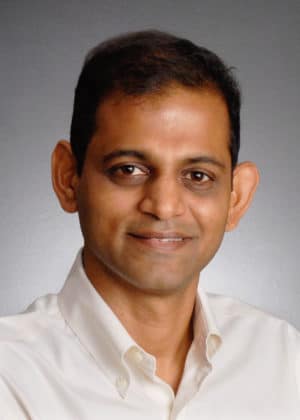How did you become a forecaster?
While pursuing a master’s degree in industrial engineering I was exposed to forecasting in an operations research and supply chain management course. I was also introduced to the classic book Forecasting: Methods and Applications by Makridakis, Wheelwright, Hyndman. The book was very well written and easy to follow, and I was able to immediately apply these techniques to solve real world forecasting problems. I fell in love with the subject and since then I have been in forecasting and advanced analytics in the pharmaceutical industry for nearly a decade.
How did you get in to the field?
Time series data is ubiquitous in real world business data. Most of the analytical methods in standard statistical courses ignore the time dimension. The first problem I faced was how to model the carry-over effects of pharmaceutical promotions from sales reps to physicians, which is a time series problem. This prompted me to explore and dwell deeper into the area of time series forecasting and analytics. I found it very interesting and rewarding to apply time series techniques to model the lag and carry-over effects on promotions and detecting outliers. While exploring, I came across a second book in forecasting practice called Principles of Forecasting by J. Scott Armstrong. I decided to apply some of the principles directly in my job. This led to improved models, and analyses that led to more informed decisions. The organization was thrilled because they had never seen analyses using forecasting principles before. This motivated me to further advance my career and skills in forecasting. At the same time, I also competed in the Kaggle Walmart Recruiting – Store Sales Forecasting competition in 2014. I came in second out of 691 competitive entries from across the world. The model I proposed did so well because I applied some of the principles in the book such as combining forecasting, and the use of simple methods such as naïve methods. The competition and doing so well definitely was an encouragement to advance my career in the field of forecasting.
What areas of forecasting interest you?
Combining forecasts, outlier detection and uncertainty modeling are the three areas that interest me the most.
- Combining forecasts: I have had great success in combining forecasts to improve predictive accuracies in my job.
- Outliers: are very common in real world business data. Detection of outliers can provide early warning to future trends, declines and issues.
- Uncertainty modeling: in time series forecasting is another area in which I’m currently focused.
All of the above have had tangible benefits when applied at my work.
How has the International Institute of Forecasting influenced you?
The very first article that I read in the Foresight journal was “How to project patient persistency” by Lee, Fader, and Hardie that appeared in the Fall 2007, issue #8. I was immediately able to apply this method to a problem that I had at work. This was received well by my colleagues and peers. The journal Foresight publishes extremely useful techniques and tutorials that practitioners like me can apply to real world settings and bridges gaps between academic research and real world application. Being a member of the Institute provides access to two of the foremost journals in forecasting. In addition, Foresight also publishes practical techniques, software reviews and the latest research in forecasting that helps me to keep me abreast of the latest developments in the field of forecasting.
What do you do in your free time?
In my free time I like to spend quality time with my young growing kids. I am a wildlife enthusiast and like to visit national parks. I am also a foodie who likes to cook. I also actively participate in data mining competitions in my spare time.


